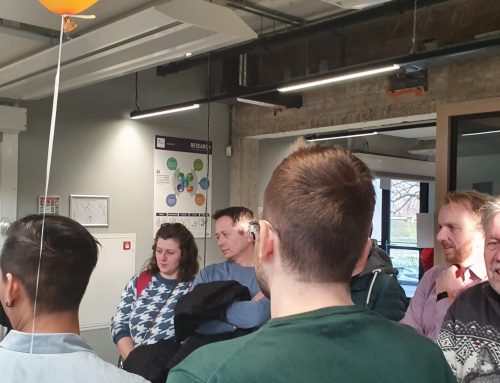On october 9th 2013 a general partnership encounter was helt. The first phase was installed and in a stadium of finalization. What next? What steps do we take to create the healthy city, now that we have street level information on air pollution?
Various ideas were presented as reported in this blog. But from acceptance of a proposition to making it happen is a complex process. Dr. Eric de Groot started to organize and budget an 8 year research program to follow 4000 people on health issues. A specific meeting was helt on 11.11.13 with the infrastructure of house docters to see how we could connect.
Ben Nas started to organize the first city quarter event to connect further with citizens. Nicolette Meeder was going forward with STIR Academy in which we captured all we learned in order to exchange it worldwide.

Meanwhile experiences were accumulated with phase 1. We suddenly could do all kinds of citizen’s exercizes that would improve our habitat and quality of life if we put our shoulders under it together. A lot of energy was put into organizing things with true professional social entrepreneurship. But it was not a multidisciplinary project yet. It were all learning processes for the much bigger cocreation.
Smart Cities Europe
The high tech lobby at EU level deployed the Smart City program in which we find the Internet of Things as an important driver of funding programs from Brussels. If we really wanted to go ahead with our impressive social R&D program of over 4000 people we would have to involve EU technological drivers with our social innovation and scientific program.
We decided to include e-Health in the approach together with the physical health analysis, environmental research and stimuluous to trigger citizen’s positive response. The complexity became massive and so was the expected funding.
Proof of Principle
This project had four important pillars that needed to work together:
* the ILM air quality measurement system
* the medical research following peoples health on and offline
* the ICT infrastructure of databases and interpretation
* the massive citizen’s participation
And all together should deliver measurable progress in health and air quality improvement over the years.
The project would never come off the ground if we did not first a smaller Proof of Principle, a miniture version of the huge program with all variables interacting already. We could use the POP to optimize the processes, test alternative choices, structure the relationships, involve feedback and streamline funding requirements. Above all we would make the project visible.
All partners had already invested a huge part in preparations. In July 2014 the local city council committed to funding of the POP doing their part in the teamwork as little else would be expected at this stage from the city governance. Summer was used to finetune the POP program with the key leaders and in September 2014 it was announced formally during the Internet of Things event at the High Tech Campus.





Leave A Comment